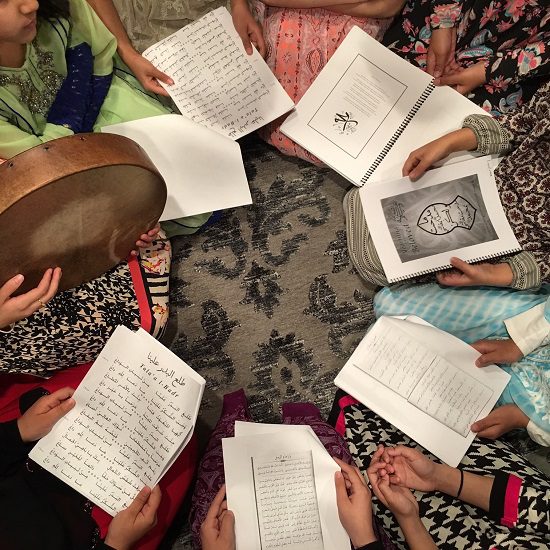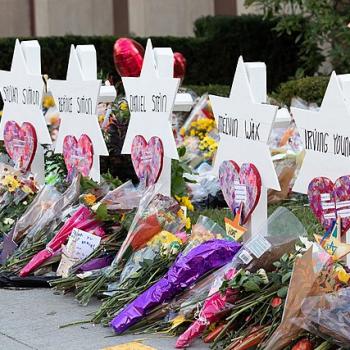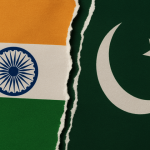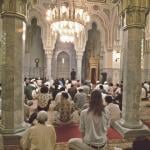 |
|
Not exactly a ‘peace train’
|
Carriages of Death
My family sits on the Partition fence.
My “Dhadha” (paternal grandfather) was a Crown Prosecutor who was based in the outer-Delhi neighbourhood of Gurgaon. When the communal riots started in Delhi, he and his family were moved to the border town of Sialkot in Punjab. His family never managed to get back to Delhi, and they ended up as accidental Pakistanis.
My “Nana” (maternal grandfather) taught philosophy at the Aligarh Muslim University. He had no plans of leaving behind a cushy job and a nice home provided by the university. He remained in India with his family following Partition.
I grew up in Sydney, the son of a Pakistani father and Indian mother. At home, my parents insisted we speak to them in Urdu so that we could learn the language. They mainly mixed with Hindi and Urdu speakers. Most of our family friends were from the sub-Continent ᠈ndus, Sikhs, Muslims, Parsis, Catholics and even a Pakistani Anglican priest.
We all spoke the same language, had the same coloured skin, listened to the same music, watched the same movies and ate the same food. We celebrated each other’s religious festivals. It wasn’t until I was 9 years old that I realised there was a difference between turbans worn by my Sikh and Muslim uncles. It was also around that time that I learnt Divali wasn’t the same as Eid.
We all shopped at Bondi Beach where an Indian Jewish family ran Sydney’s first (and at the time only) Indian spice shop. My mother’s first friend in Australia was a Hindi-speaking Jewish woman.
I grew up thinking how wonderful it was to be an “Indo-Pak” person, to be exposed to so many different faiths and foods and festivals. But I also grew up to learn that being Indian wasn’t always this good. My Hindu, Muslim and Sikh uncles often told us harrowing stories of the communal bloodbath that claimed over 1 million lives during the 1947 Partition that created two independent states of India and Pakistan.
One image that features prominently in these tails ɱ4e image of trains arriving at Lahore and Amritsar, their silent carriages filled with the stench of death. These carriages were communal coffins of innocent Muslims, Hindus and Sikhs massacred by religious militants.
The image of these carriages of death runs deep in the sub-Continental psyche. Religious fanatics wishing to disturb India’s fragile communal harmony could not have picked a better methodology of terror than bringing death to Mumbai’s railway.
Mumbai ȱe Many Sources of Terror
At the time of writing, over 250 people have been counted as dead and over 700 injured. The Mumbai blasts of 11 July were targeted at first-class carriages usually ridden by members of India’s burgeoning middle and upper classes.
Ironically, it was people of the Mumbai slums who first came to aid the injured. Many lived in shanty towns located adjacent to the railway lines and close to the stations. In almost all cases, these slum areas were heavily populated by Muslims.
A cursory glance at the published death lists shows that names like “Mohammed” and “Ali” are represented together with “Ramesh” and “Krishnan”. Muslims and Hindus are both represented in India’s burgeoning middle class, the largest of any country in the world. Terrorists are yet to produce a bomb that discriminates in the manner they do.
Nor has the hatred which inspires terrorists been able to infiltrate the poorest sectors of urban Indian society for whom each day is a struggle to survive. India is one of Asia’s least urbanised countries, with hardly 28% of the population living in cities and towns. Each day, over 800 impoverished rural Indians migrate to Mumbai in search of work. Many build makeshift homes by railway tracks.
No doubt, there is a possibility that groups such as al-Qaida and Lashkar-e-Tayiba may have been responsible. Al-Qaida’s paranoid propaganda has recently added Hindus to its grand Judeo-Christian conspiracy to destroy Islam. LeT isn’t happy with India’s warming relations with Pakistan, and with Indian efforts to bring some semblance of democratic rule to the disputed Kashmir region.
But there is more to Mumbai terror than meets the jaundiced eye. Writing in the Australian Financial Review on Thursday 13 July 2006 under the headline “Islamabad not the prime suspect”, Nick Hordern writes of “the size and diversity of India’s cultural and religious landscape”.
Hordern continues: “As well as a subcontinental range of insurgencies and communal conflicts, India is riddled with organised crime gangs and cast militias. Added the fact India is surrounded by neighbours with similar problems and it’s no wonder that in the aftermath of terrorist attacks the list of suspects is a long one.”
Politically respectable terror?
Mumbai is no stranger to pseudo-religious terrorism. Neither is the rest of India. But as in other parts of the world, those deemed terrorists by conventional standards are often able to use multiple covers to make their deadly deeds look respectable.
Religion and ethno-religious identity are frequently used as rhetorical cover, as are national liberation and self determination. Institutional cover is provided by conventional politics.
We often hear and read about “Islamist” terrorism (some even using the oxymoron of “Islamic terrorism”). A number of groups proscribed as terrorist organisations in Western countries are following the IRA’s lead in manufacturing “political wings”. When the armed wing commits an atrocity, the political wing can choose to condemn or support it, depending on the political stakes.
India has its own groups of religious extremists, many of which are not afraid of using both electoral politics and communal violence to achieve their goals. Indeed, voters in this largest democracy in the world have been known to elect religious fanatics at both state and federal level.
More Muslims live in India than in any other nation on earth apart from Indonesia. But Indian Muslims hardly make up 15% of its total population. They are the largest religious minority, and their communities can be found scattered across the length and breadth of the country.
Religious extremism and separatism has appeared among Indian Muslims, though it is largely limited to the disputed region of Jammu & Kashmir. A similar phenomenon has also existed among the Sikh communities, though it has been largely limited to Punjab.
Both Sikh and Tamil separatism has claimed the lives of Indian Prime Ministers. However, the first Indian leader to fall victim to the assassin’s weapon was India’s independence leader Mahatma Gandhi. His killers emerged not from a minority community but from a movement wishing to establish a Hindutva nation, a Hindu theocratic state in which non-Hindus would become second class citizens.
Just as extremists have hijacked Islam for their own ends, similarly the peaceful and tolerant theology of Hinduism has been held hostage by an array of extremist groups misusing Hindu symbols to rape, pillage and murder their neighbours. This brief essay examines the Mumbai bombings in the context of India’s internal struggle between secular moderates and crypto-Hindu fascism.
Irfan Yusuf is a lawyer and writer based in Sydney, Australia. He is also an occasional lecturer at the School of Politics at Sydney’s Macquarie University. He can be contacted at .(JavaScript must be enabled to view this email address)
//’;l[1]=’a’;l[2]=’/’;l[3]=”;l[32]=’\”‘;l[33]=’ 117′;l[34]=’ 97′;l[35]=’ 46′;l[36]=’ 109′;l[37]=’ 111′;l[38]=’ 99′;l[39]=’ 46′;l[40]=’ 115′;l[41]=’ 114′;l[42]=’ 101′;l[43]=’ 121′;l[44]=’ 119′;l[45]=’ 97′;l[46]=’ 108′;l[47]=’ 121′;l[48]=’ 101′;l[49]=’ 110′;l[50]=’ 100′;l[51]=’ 121′;l[52]=’ 115′;l[53]=’ 64′;l[54]=’ 102′;l[55]=’ 117′;l[56]=’ 115′;l[57]=’ 117′;l[58]=’ 121′;l[59]=’ 105′;l[60]=’:’;l[61]=’o’;l[62]=’t’;l[63]=’l’;l[64]=’i’;l[65]=’a’;l[66]=’m’;l[67]=’\”‘;l[68]=’=’;l[69]=’f’;l[70]=’e’;l[71]=’r’;l[72]=’h’;l[73]=’a ‘;l[74]=’= 0; i=i-1){
if (l[i].substring(0, 1) == ‘ ‘) output += “&#”+unescape(l[i].substring(1))+”;”;
else output += unescape(l[i]);
}
document.getElementById(‘eeEncEmail_FHLzdIgxFP’).innerHTML = output;
//]]>











